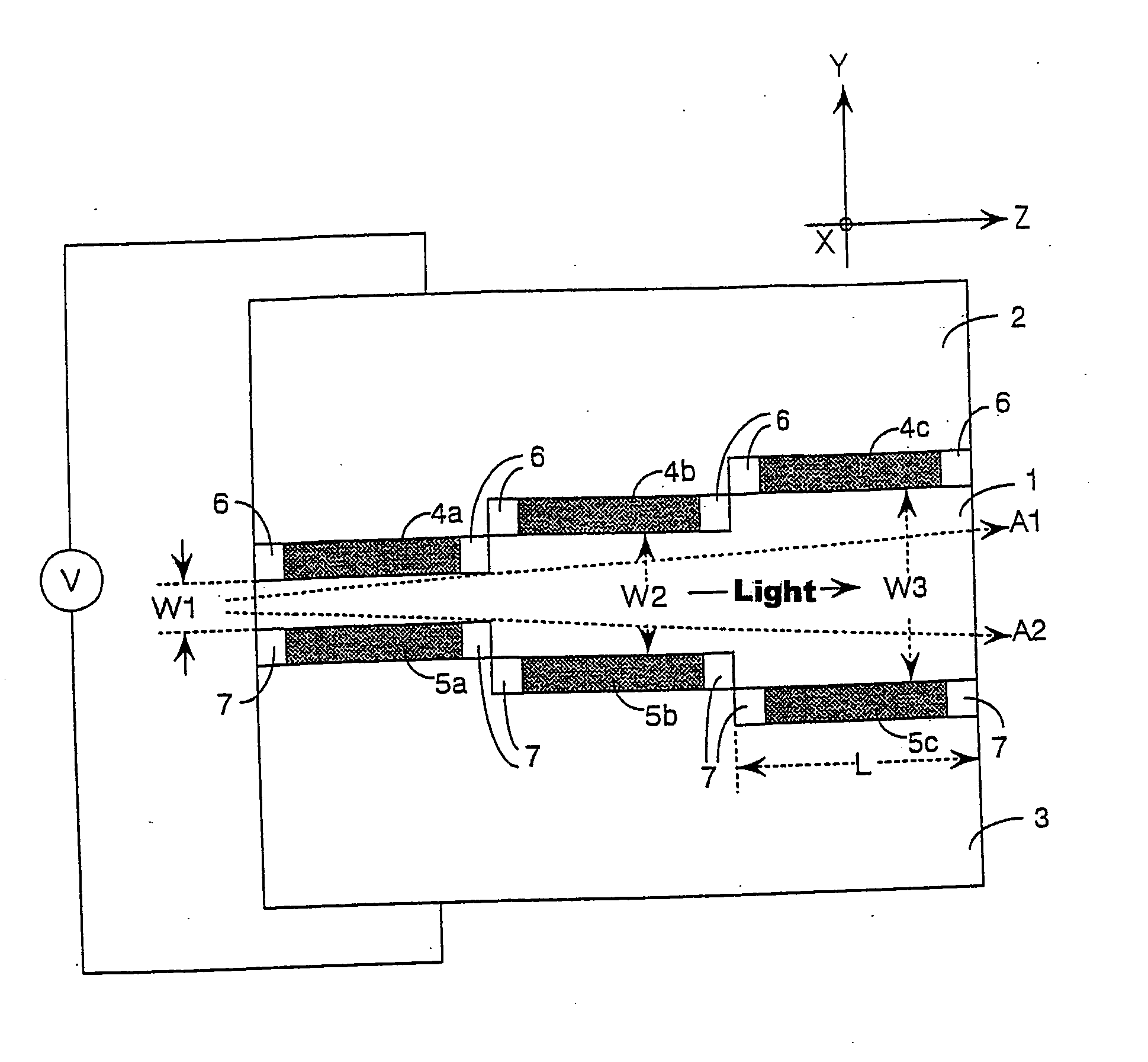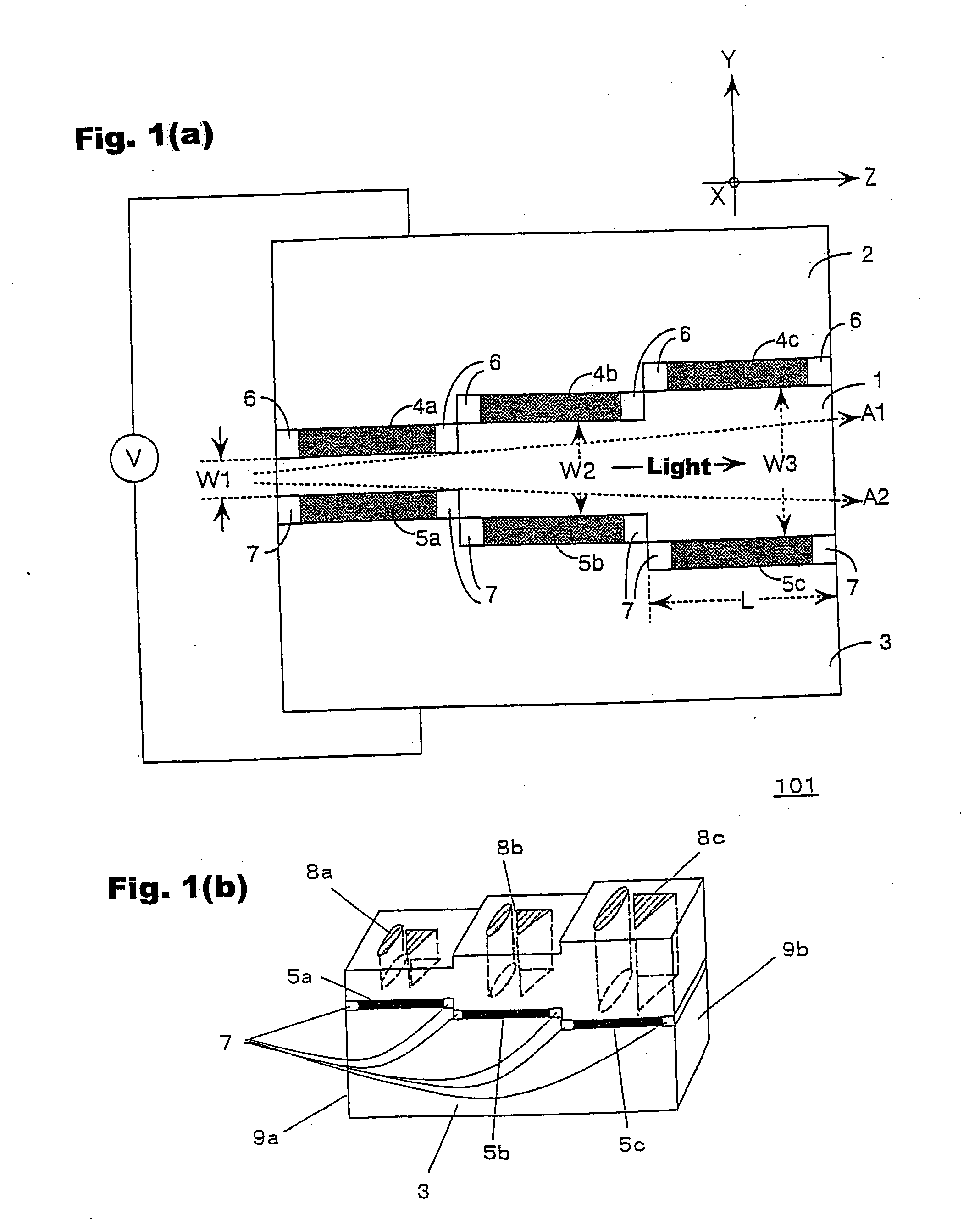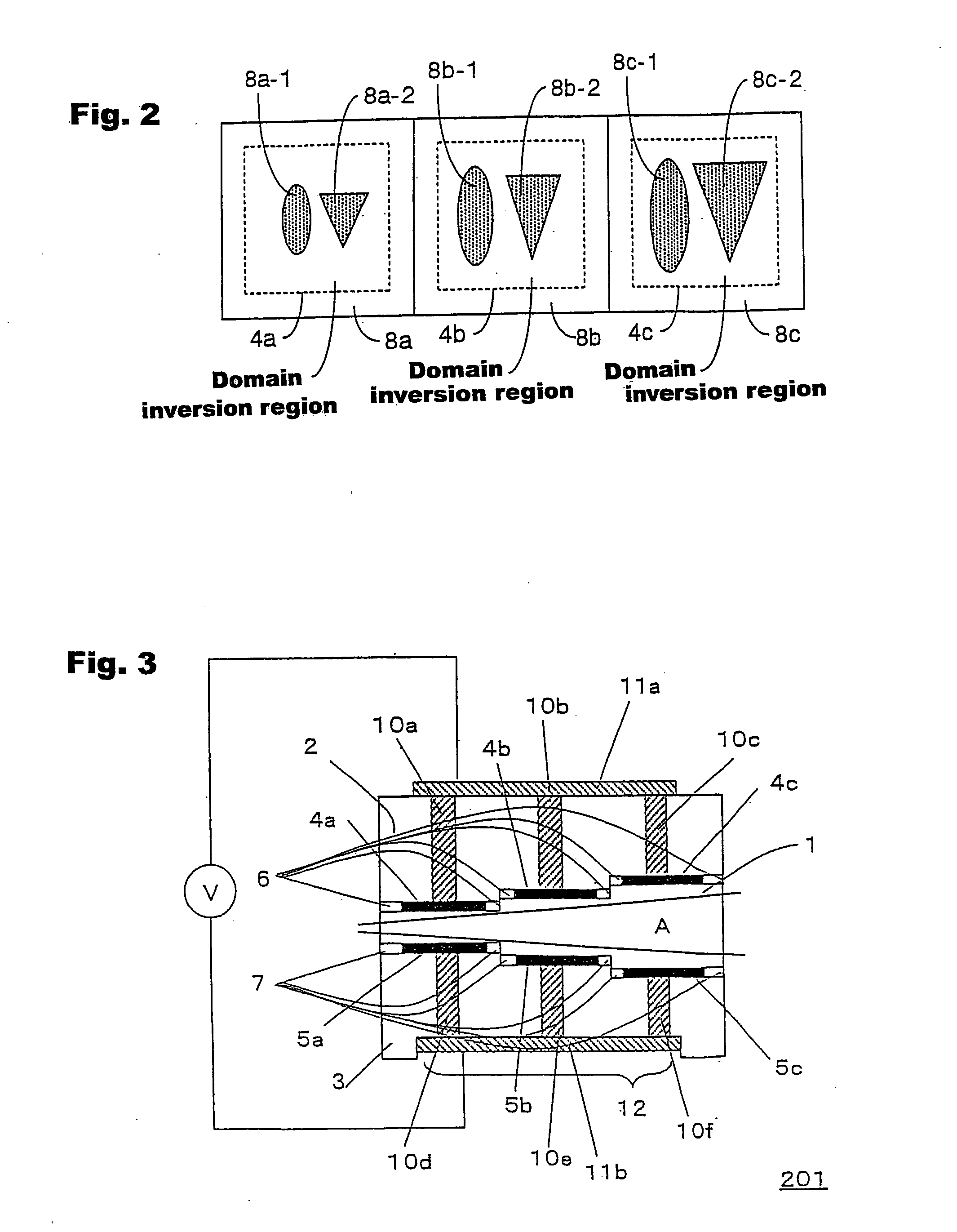Optical path switching device
- Summary
- Abstract
- Description
- Claims
- Application Information
AI Technical Summary
Benefits of technology
Problems solved by technology
Method used
Image
Examples
embodiment 1
[0055] First, one embodiment of the present invention will be described with reference to FIGS. 1(a) and 1(b). FIG. 1(a) is a side diagram of an optical path switching device 101, and FIG. 1(b) is a perspective diagram showing a portion of the optical path switching device 101 that is below a crystal material portion 1.
[0056] In FIG. 1(a), the optical path switching device 101 of the present invention is formed of the crystal material portion 1, a first support member 2, a second support member 3, first electrode layers 4a, 4b and 4c, second electrode layers 5a, 5b and 5c, first adhesive layers 6 and second adhesive layers 7. In the case where the first support member 2 and the second support member 3 are made of a conductive material, a voltage V for modulating a refractive index is applied between the upper surface of the first support member 2 and the lower surface of the second support member 3.
[0057] The crystal material portion 1 is formed in a manner where the front surface...
embodiment 2
[0110] FIGS. 7(a) and 7(b) are diagrams showing the structure of an optical path switching device according to Embodiment 2 of the present invention.
[0111]FIG. 7(a) is a cross sectional diagram of the optical path switching device as viewed from the side, and FIG. 7(b) is a perspective diagram of the optical path switching device, from which the first support member 22, which is the upper portion of the device, has been removed.
[0112] The optical path switching device 102 of Embodiment 2 is formed of a crystal material portion 21, a first support member 22, a second support member 23, a first electrode layer 24, second electrode layers 25 (25a, 25b and 25c), first adhesive layers 26 and second adhesive layers 27.
[0113] In Embodiment 2, only the surfaces on one side of the crystal material portion 21 are in step form, and the thickness varies in the structure. The surface on the other side is a flat surface having no steps. In addition, as shown in FIG. 7(b), refractive region gro...
embodiment 3
[0129] An optical path switching device where the thickness of the crystal material portion from the entrance side to the emission side varies in so-called taper form will be described below.
[0130] FIGS. 9(a) and 9(b) are a cross sectional diagram of the optical path switching device of Embodiment 3 and a perspective diagram showing a portion of the device from which the first support member 32 has been removed.
[0131] In FIG. 9(a), the length of the crystal material portion 31 on the entrance surface 39c side in the direction from the top to the bottom in the plane of the paper is 70 μm, the length of the crystal material portion 31 on the emission surface 39d side in the direction from the top to the bottom in the plane of the paper is 200 μm, and the surfaces of the crystal material portion 31 that face the first support member 32 and the second support member 33 are both formed as flat surfaces.
[0132] In addition, refractive region groups 38 which are the same as in the previo...
PUM
 Login to View More
Login to View More Abstract
Description
Claims
Application Information
 Login to View More
Login to View More - R&D
- Intellectual Property
- Life Sciences
- Materials
- Tech Scout
- Unparalleled Data Quality
- Higher Quality Content
- 60% Fewer Hallucinations
Browse by: Latest US Patents, China's latest patents, Technical Efficacy Thesaurus, Application Domain, Technology Topic, Popular Technical Reports.
© 2025 PatSnap. All rights reserved.Legal|Privacy policy|Modern Slavery Act Transparency Statement|Sitemap|About US| Contact US: help@patsnap.com



